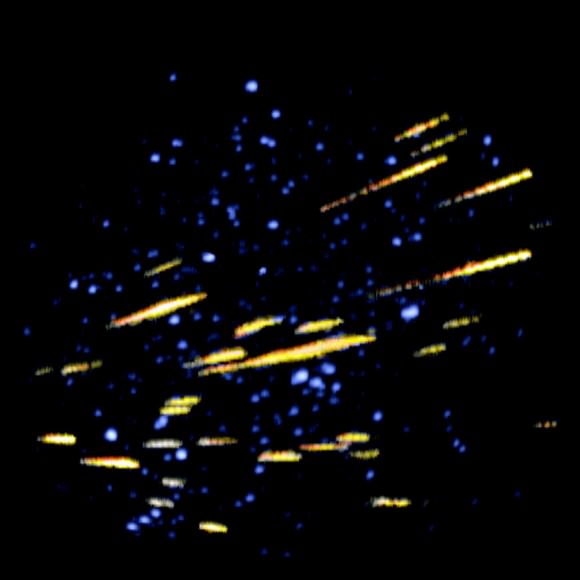
If you live in the Europe, North Africa, and the Middle East area, then keep watching the clock for 17-18:00 UTC when you may be in the right place at the right time for a burst of activity from the annual Draconid Meteor Shower. There's a possibility you might see up to 1,000 meteors an hour!
As always, meteor showers are unpredictable events - but that doesn't mean you can't be prepared or forewarned. While the gibbous Moon will put a damper on fainter meteor streaks, observers in Europe, North Africa, and the Middle East. are well situated to catch a strong pocket of activity.
"Meteor showers are as difficult to predict as rain showers. The Draconids have surprised us before, and they may do so again." says Canadian astronomer Paul Wiegert. "I’d encourage anyone outside on the night of October the 8 to look to the northern skies, just in case."
This isn't the first time the Draconid meteor shower has produced a brief storm. In 1933 and 1946 the activity reached an average hourly rate of 10,000. While that's pretty incredible, the same cometary debris trail left quite a show in the years 1952, 1985, and 1998 when it produced hundreds per hour. These remnants of Comet Giacobini-Zinner aren't the most dramatic of all showings - but knowing where the meteoroid stream is located makes such predictions valid.
When and where? In this case, start your observations just as soon as the sky gets dark. Since Draco is a northern constellation, those at high latitudes are move favored (sorry, southern hemisphere), so face toward the north and get comfortable. While the storm prediction will happen during daylight hours for North American observers, don't give up hope! It looks like clear skies for many of us and chances are above average for catching a shooting star.
When opportunity knocks, ya' gotta' be there to open the door...
And don't despair if you don't live in Europe, North Africa, and the Middle East, or if you get clouded out. You can still watch and listen to meteors enter the atmosphere on Spaceweather radio. Meteors reflect radio signals as they burn up and you can hear this as eerie whistles and pings.
A similar system, still employing the radio reflection method displays meteors coming in on your computer with a cool graph - The Meteorwatch Live View
And follow Universe Today's Adrian West on his Twitter feed, VirtualAstro and on his website MeteorWatch as he'll be providing updates on observed meteor rates in various parts of the world.
For Further Reading: Wiegert’s original announcement via Physorg.com. Meteor Burst photo courtesy of NASA.
No comments:
Post a Comment